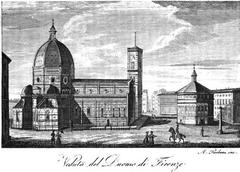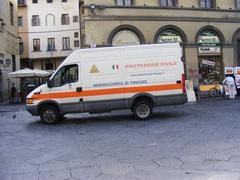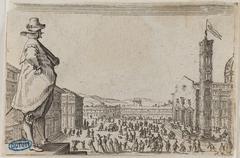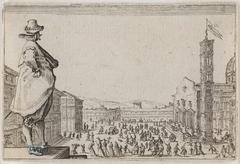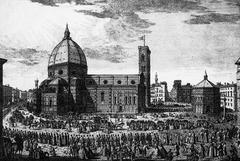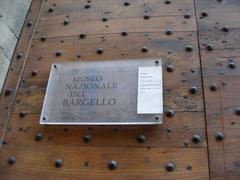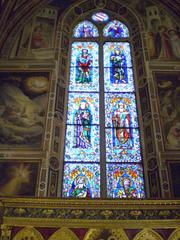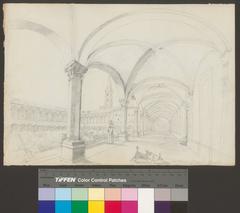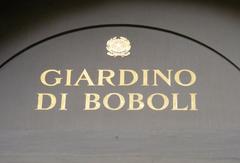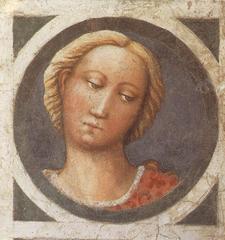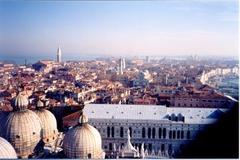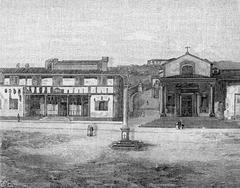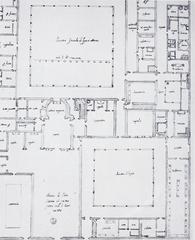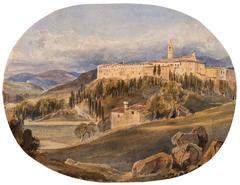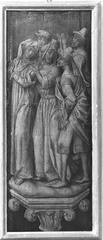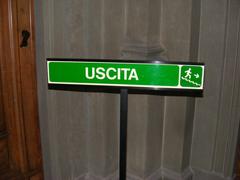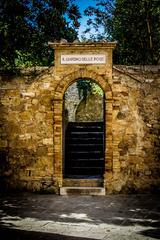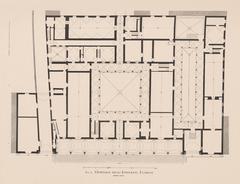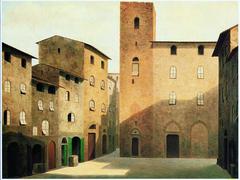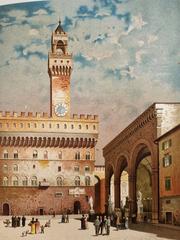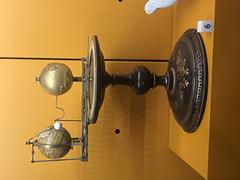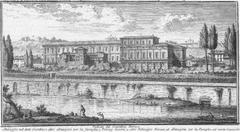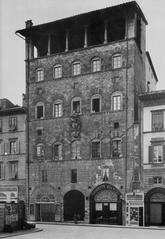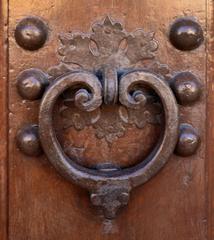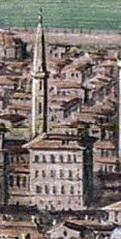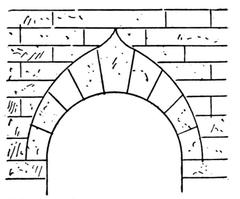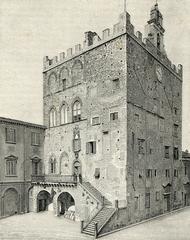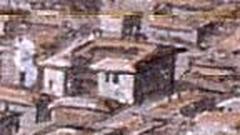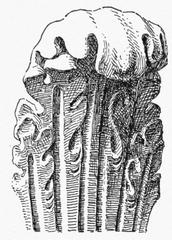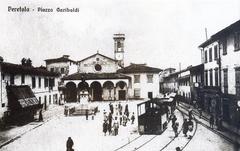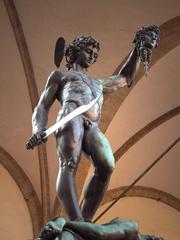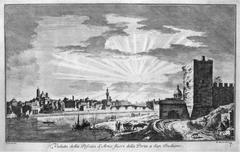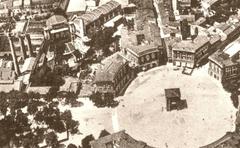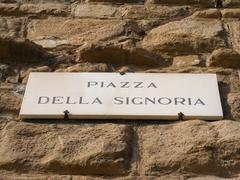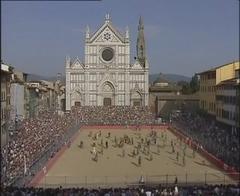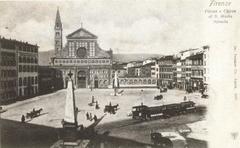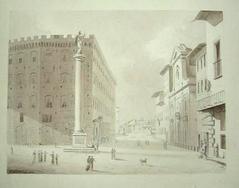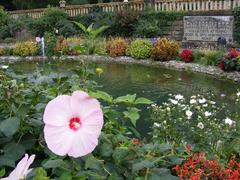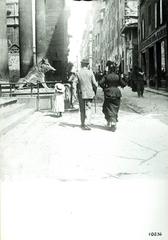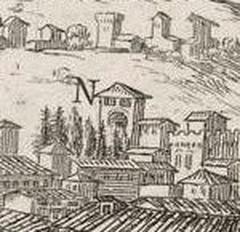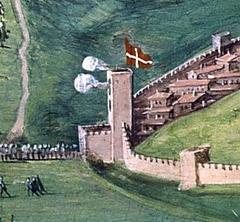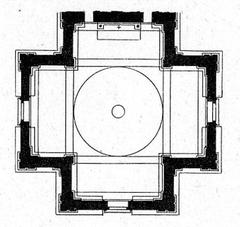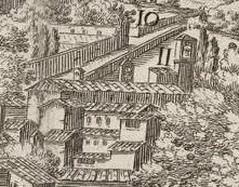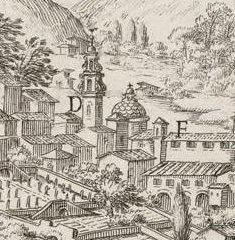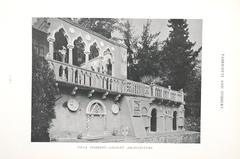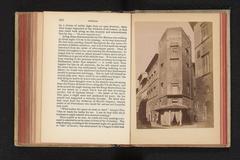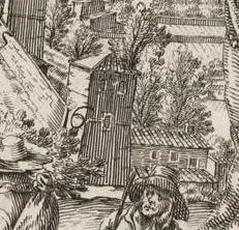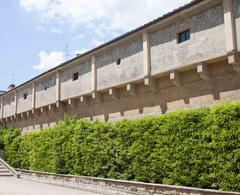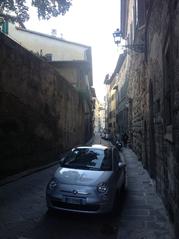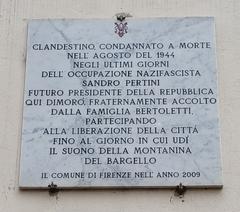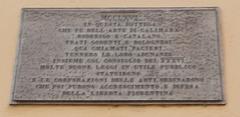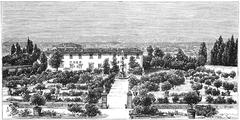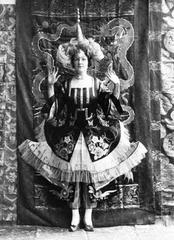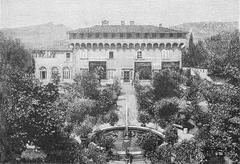
Comprehensive Guide to Visiting Piazza del Duomo, Florence, Italy
Date: 16/07/2024
Introduction
The Piazza del Duomo, an iconic square nestled in the heart of Florence, Italy, stands as a testament to the city’s rich historical and architectural legacy. This monumental site, dating back to the late 13th century, is a treasure trove of Renaissance art and architecture, drawing millions of visitors annually. The square is home to some of Florence’s most significant landmarks, including the Florence Cathedral (Cattedrale di Santa Maria del Fiore), Giotto’s Campanile, and the Baptistery of San Giovanni, each contributing to the piazza’s unique charm and historical importance. The Florence Cathedral, in particular, with its awe-inspiring dome designed by Filippo Brunelleschi, represents a pinnacle of Renaissance engineering and architectural prowess (Florence Cathedral History). This guide aims to provide a comprehensive overview of the Piazza del Duomo, delving into its historical significance, architectural marvels, and practical visitor information, including ticket details, visiting hours, and travel tips. Whether you are an art aficionado, a history enthusiast, or a casual traveler, this guide will equip you with all you need to make your visit to Piazza del Duomo a memorable experience.
Table of Contents
- Introduction
- Origins and Early Development
- Construction of the Cathedral
- The Baptistery of San Giovanni
- The Campanile
- The Role of the Medici Family
- Renaissance and Beyond
- Modern Developments
- Preservation and Restoration
- Cultural Significance
- Visitor Information
- Conclusion
Origins and Early Development
The development of Piazza del Duomo began with the construction of the Florence Cathedral, also known as the Cattedrale di Santa Maria del Fiore. The cathedral’s foundation stone was laid on September 8, 1296, under the direction of architect Arnolfo di Cambio (Florence Cathedral History).
Construction of the Cathedral
The construction of the Florence Cathedral was a monumental task spanning over 140 years. The initial design by Arnolfo di Cambio was ambitious, featuring a large nave and a massive dome. However, the project faced challenges, including financial constraints and technical difficulties. It wasn’t until 1418 that a competition was held to design the dome, which was won by Filippo Brunelleschi with his innovative design (Brunelleschi’s Dome).
The Baptistery of San Giovanni
Adjacent to the Florence Cathedral is the Baptistery of San Giovanni, one of the oldest buildings in Florence. The Baptistery dates back to the 4th or 5th century and was built on the site of a Roman temple dedicated to Mars. It is renowned for its stunning bronze doors, particularly the “Gates of Paradise” created by Lorenzo Ghiberti (Ghiberti’s Gates of Paradise).
The Campanile
The Campanile, or bell tower, of the Florence Cathedral is another significant structure in the Piazza del Duomo. Designed by Giotto di Bondone, its construction began in 1334 and was completed in 1359 by Francesco Talenti and Andrea Pisano. The tower stands at 84.7 meters (277.9 feet) and is adorned with intricate sculptures and reliefs (Giotto’s Campanile).
The Role of the Medici Family
The Medici family, who rose to power in Florence during the 15th century, played a crucial role in the development and embellishment of the Piazza del Duomo. Lorenzo de’ Medici, known as Lorenzo the Magnificent, was particularly influential in supporting artists such as Michelangelo and Leonardo da Vinci (Medici Family).
Renaissance and Beyond
The Renaissance period saw the completion of many structures in the Piazza del Duomo. The Florence Cathedral was finally consecrated on March 25, 1436, by Pope Eugene IV. The dome, completed by Brunelleschi, became an architectural marvel and a symbol of Florence’s artistic and engineering prowess (Opera del Duomo Museum).
Modern Developments
In the 19th century, the façade of the Florence Cathedral underwent significant changes. The original medieval façade, which had remained unfinished for centuries, was replaced with a new design by Emilio De Fabris, completed in 1887 (Florence Cathedral Façade).
Preservation and Restoration
The Piazza del Duomo has undergone numerous preservation and restoration efforts to maintain its historical and architectural integrity. The Opera di Santa Maria del Fiore, responsible for the maintenance of the cathedral complex, has implemented various projects to restore and preserve the structures (Opera di Santa Maria del Fiore).
Cultural Significance
The Piazza del Duomo is a UNESCO World Heritage Site and serves as a focal point for religious, cultural, and social events. The annual Scoppio del Carro, or “Explosion of the Cart,” is a traditional event held on Easter Sunday that dates back to the 12th century (Scoppio del Carro).
Visitor Information
Tickets and Visiting Hours
- Florence Cathedral: Open daily from 10:00 AM to 5:00 PM. Admission is free, but tickets are required for the dome, bell tower, and museum. Tickets can be purchased online or at the ticket office.
- Baptistery of San Giovanni: Open daily from 8:15 AM to 10:15 AM, and 11:15 AM to 7:30 PM. Tickets are required for entry.
- Giotto’s Campanile: Open daily from 8:15 AM to 7:45 PM. Tickets are required for entry.
- Opera del Duomo Museum: Open daily from 9:00 AM to 7:00 PM. Tickets are required for entry.
Travel Tips
- Best Time to Visit: Early morning or late afternoon to avoid crowds.
- Nearby Attractions: Uffizi Gallery, Ponte Vecchio, and Palazzo Vecchio are within walking distance.
- Accessibility: The piazza is wheelchair accessible, but some attractions may have limited access.
- Guided Tours: Consider joining a guided tour for in-depth historical insights.
FAQ Section
Q: What are the visiting hours for Piazza del Duomo? A: The piazza is open 24/7, but individual attractions like the cathedral, baptistery, and campanile have specific hours.
Q: Do I need tickets to visit Piazza del Duomo? A: Entry to the piazza is free, but tickets are required for the cathedral dome, bell tower, baptistery, and museum.
Q: Are there guided tours available? A: Yes, guided tours are available and recommended for a comprehensive experience.
Q: Is the Piazza del Duomo wheelchair accessible? A: The piazza itself is accessible, but some attractions may have limited accessibility.
Conclusion
The Piazza del Duomo is a rich tapestry of architectural innovation, artistic achievement, and cultural significance. From its origins in the 13th century to its status as a modern-day UNESCO World Heritage Site, the square continues to captivate and inspire visitors from around the world. The ongoing preservation efforts ensure that future generations will be able to appreciate the beauty and historical importance of this iconic Florentine landmark. Be sure to explore other related posts and follow us on social media for more updates (Brunelleschi’s Dome, Ghiberti’s Gates of Paradise, Giotto’s Campanile).
References
- Florence Cathedral History, Museums in Florence, https://www.museumsinflorence.com/musei/duomo.html
- Brunelleschi’s Dome, Britannica, https://www.britannica.com/biography/Filippo-Brunelleschi
- Ghiberti’s Gates of Paradise, Britannica, https://www.britannica.com/biography/Lorenzo-Ghiberti
- Giotto’s Campanile, Britannica, https://www.britannica.com/topic/Giottos-Campanile
- Medici Family, Britannica, https://www.britannica.com/topic/Medici-family
- Opera del Duomo Museum, Museum Florence, https://www.museumflorence.com/
- Florence Cathedral Façade, Britannica, https://www.britannica.com/topic/Florence-Cathedral
- Opera di Santa Maria del Fiore, Duomo Firenze, https://www.duomofirenze.it/
- Scoppio del Carro, Visit Florence, https://www.visitflorence.com/florence-events/explosion-of-the-cart.html
